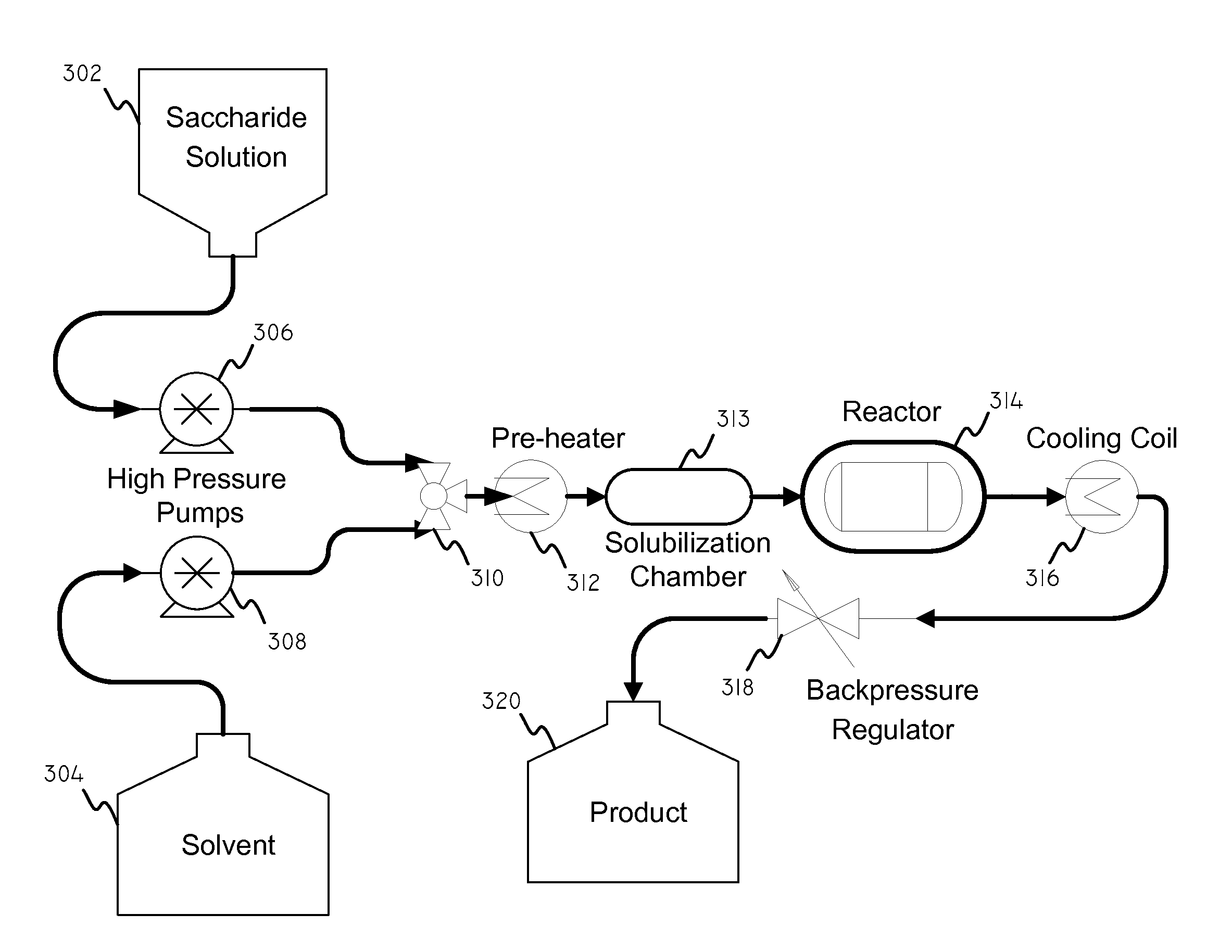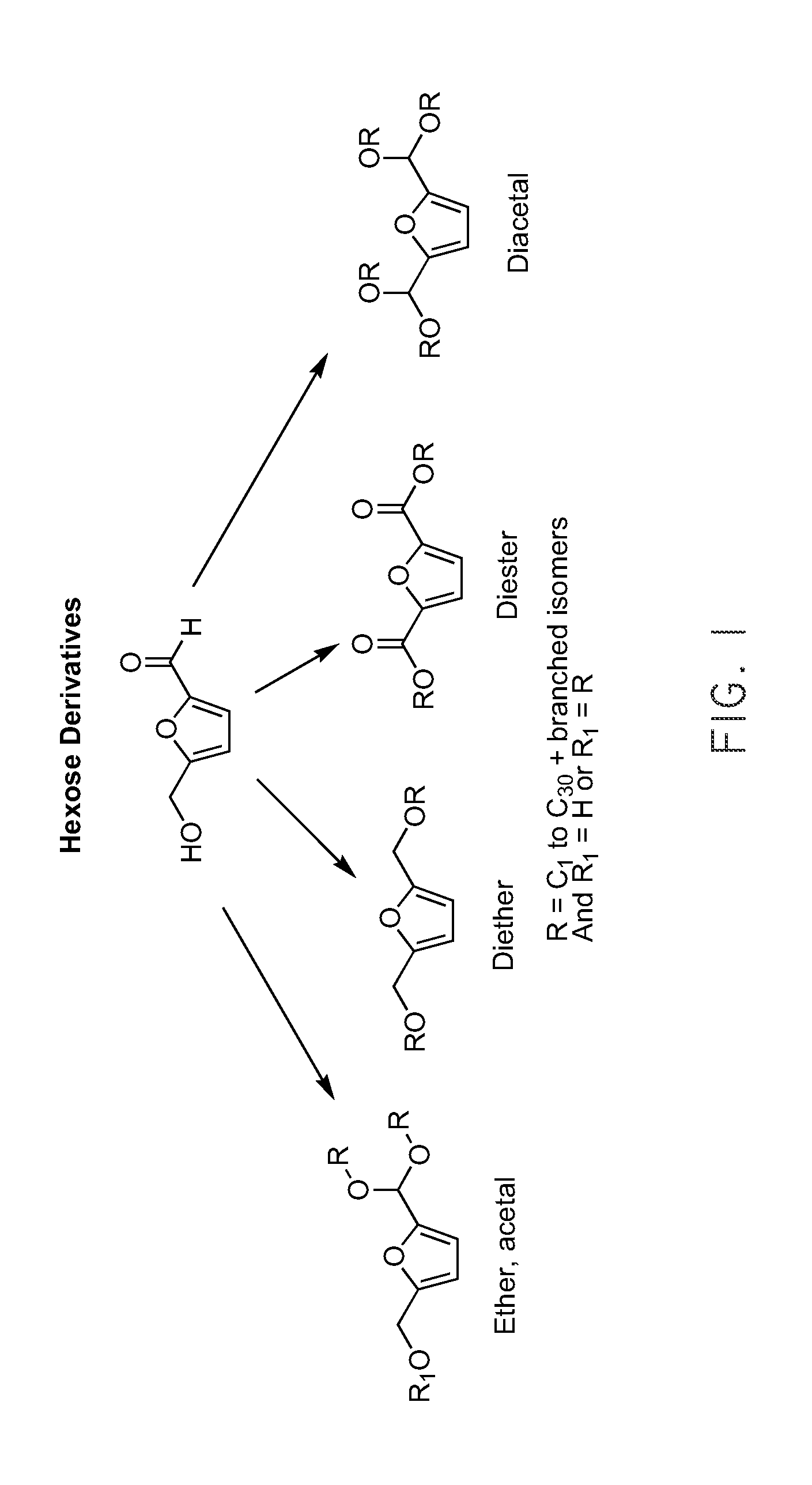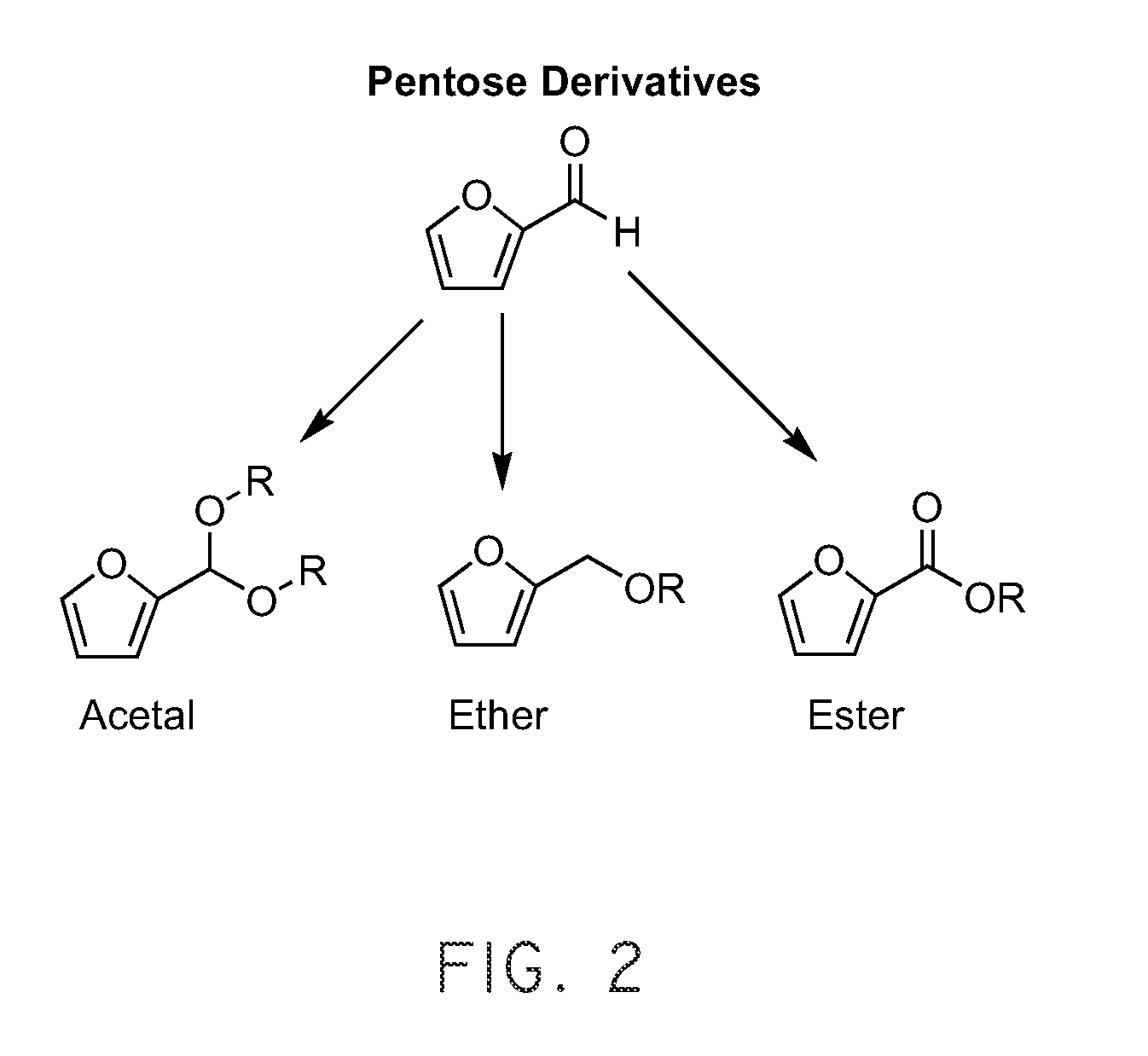Systems and methods for producing fuels and fuel precursors from carbohydrates
a technology of precursors and fuels, applied in the direction of fuels, organic chemistry, chemical/physical/physical-chemical processes, etc., can solve the problems of inefficiency, inability to meet the needs of customers,
- Summary
- Abstract
- Description
- Claims
- Application Information
AI Technical Summary
Benefits of technology
Problems solved by technology
Method used
Image
Examples
example 1
Formation of Titania Reactor Columns
[0069]Titania (80 micron average particle size, 300 Å average pore diameter) particles were obtained from ZirChrom Separations (Anoka, Minn.). Particles were packed at ZirChrom Separations (Anoka, Minn.) into a reactor column using a downward slurried high-pressure packing station (Alltech Associates, Deerfield, Ill.). The particles were packed into all-stainless steel column hardware obtained from Isolation Technologies (Hopedale, Mass.). The reactor was outfitted with 2-micron stainless steel fits.
[0070]The reactor column had dimensions of 0.46 cm i.d.×15 cm length. A slurry was first formed by adding the titania particles to HPLC-grade methanol. Reactor packing pressures of 7,000 PSI was used with methanol as the pusher solvent. The reactor was allowed to pack and compress. The high pressure packing pump from Haskel (Burbank, Calif.) was then shut off and the reactor was allowed to slowly bleed off pressure while remaining attached to the packi...
example 2
Reactor System Design
[0071]A reactor system was set up. FIG. 3 shows a schematic view of the reactor system. Two high pressure Waters 590 HPLC pumps 306, 308 (obtained from Waters Corporation, Milford, Mass.) were set up to draw from separate reactant reservoirs (for example, a saccharide solution reservoir 302 and an organic solvent reservoir 304) that were continuously sparged with nitrogen to minimize the effect of dissolved oxygen on the system. The connecting tubing in the system consisted of standard 1 / 16″ stainless steel HPLC tubing (Alltech Associates, Deerfield, Ill.).
[0072]The reactant solution streams were combined using a “T”310 and then passed through an electrically driven preheater 312 that was capable of bringing the mixture to the desired set point temperature before entering the independently thermostated fixed bed catalytic reactor 314 (such as reactor column from example 1). Temperature control was achieved using EZ-Zone PM Watlow (St. Louis, Mo.) temperature con...
example 3
Synthesis of HMF from Sucrose
[0074]A 50 / 50 (vol / vol) methanol / water mixture was prepared and then pumped through a reactor set up as described in Example 2 above using a column packed as described in Example 1 above. The column had dimensions of 4.6 mm (inside diameter) by 150 mm in length. The column was packed with titania particles (5 μm average particle diameter, 300 Å average pore diameter). The methanol / water mixture was pumped through the reactor at 1.0 mL / min while the preheater and column were set to 250° C.
[0075]Once the desired temperatures were reached a solution including 40 g sucrose, 80 g water, and 180 g methanol was pumped through the reactor at flow rates of 3, 1.8, and 1.2 mL / min. Fractions were collected for each flow rate. Backpressure stayed steady at these contact times. The reactor was cooled down while flushing water / methanol through the column. Analysis by 1H NMR verified the presence of 5-HMF as a major decomposition product.
PUM
 Login to View More
Login to View More Abstract
Description
Claims
Application Information
 Login to View More
Login to View More - R&D
- Intellectual Property
- Life Sciences
- Materials
- Tech Scout
- Unparalleled Data Quality
- Higher Quality Content
- 60% Fewer Hallucinations
Browse by: Latest US Patents, China's latest patents, Technical Efficacy Thesaurus, Application Domain, Technology Topic, Popular Technical Reports.
© 2025 PatSnap. All rights reserved.Legal|Privacy policy|Modern Slavery Act Transparency Statement|Sitemap|About US| Contact US: help@patsnap.com



